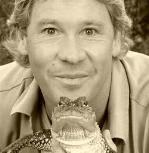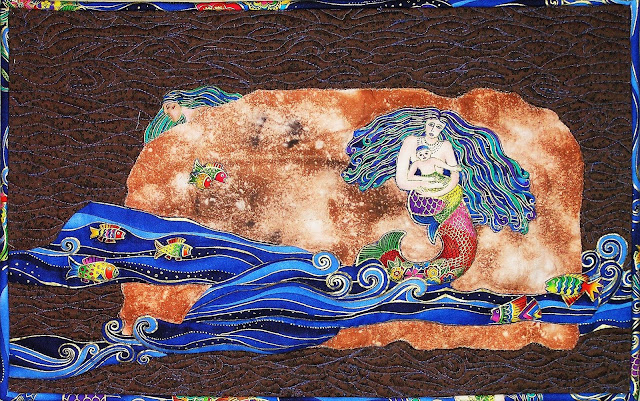
Quilt No. 63
January 2009
The hibakusha can only stand and mourn as radioactive fallout destroys their lives and their city. Their clothes have been burned off. Waves lap up around them in the dying city of Hiroshima, a city that is crisscrossed by many rivers. Flames will consume the city, and those who seek refuge in the waves of the rivers will succumb to the fire storm. Hibakusha, literally translated as "explosion-affected people", is the Japanese word given to the injured survivors of the atomic bombings of Hiroshima and Nagasaki.
August 6, 1945 was a calm and sunny morning in the city of Hiroshima. At 8:15 the atomic bomb, Little Boy, was detonated over the city with a blast force equivalent to 15,000 tons of TNT. Within minutes 80,000 people within a half mile of ground zero were dead. Many more would die; injured survivors would become the hibakusha.
As the citizens tried to make their way in their ruined city, many became sick and died. Had they been attacked by a new chemical or biological agent? They were unaware that a nuclear weapon had been detonated. No one was familiar with the specter of atomic bombs or their aftermath - radiation sickness. Little was known about the effect of radiation at that time, and the disfigured and ill survivors, the hibakusha, experienced severe discrimination. Feared as carrying a contagious or hereditary disease, they were often denied jobs and marriage partners. Although medical science gradually revealed the cause of their illnesses, the negative attitude towards the hibakusha continues even today.
This quilt, with its post-apocalyptic setting, depicts a small part of their story. The red-crowned crane flying over the scene is a symbol of long life and fidelity, or of luck and peace. In Japanese folklore this crane is said to live for a thousand years. Today, it is a highly endangered species with less than 1,500 birds remaining in the wild.
As of March 2008, there were 243,692 living hibakusha in Japan. Their average age was 75 years. Memorials record the names of more than 400,000 hibakusha in Hiroshima and Nagasaki. Many more names are added each year.
Quilting Notes
The border of this quilt is one solid piece, with the figures and city viewed in a central “window.” One figure was hand drawn and repeated with minor variations to create the groups of hibakusha. The human figures were done in appliqué and outlined with hand embroidery. The city was created by dying various fabrics in slightly different shades, and fusing them to the background. Buildings were then outlined with embroidery. This piece is hand quilted.













